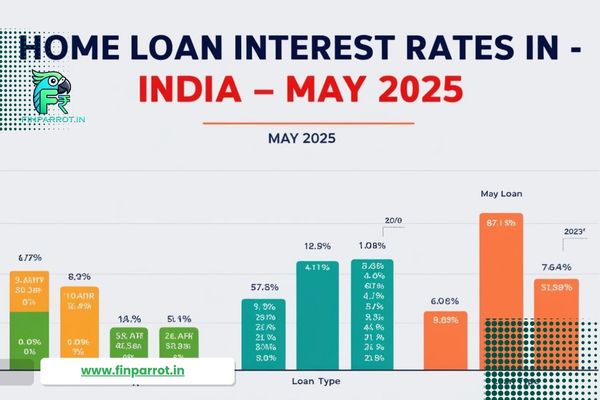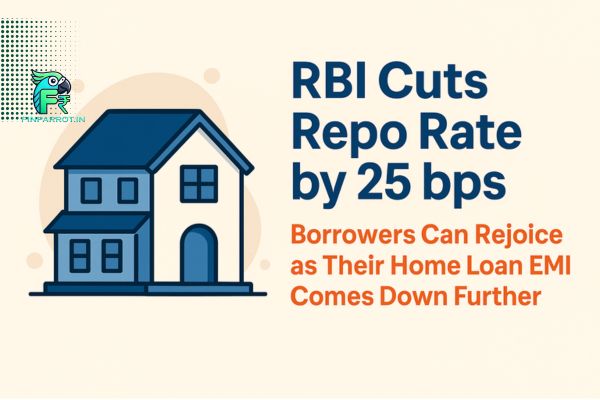Introduction:
Looking to buy your dream home? One of the first things you’ll need to understand is home loan interest rates. These rates can greatly impact your total repayment amount over time. Whether you’re considering HDFC, SBI, ICICI, or any other lender, knowing the latest interest rates helps you make a smarter financial decision. In this post, we’ll cover the current home loan interest rates offered by major banks and financial institutions in India as of May 2025, and what factors you should consider before choosing a loan. By the end, you’ll be able to compare rates easily and pick the one that suits your financial goals.
Home Loan Interest Rates in India – May 2025
👉 Try the tool now: SBI Home Loan Interest Calculator
1. Why Home Loan Interest Rates Matter
The interest rate is essentially the cost of borrowing money. Even a 0.5% difference in rates can mean thousands more paid over your loan tenure. For instance, on a ₹50 lakh loan for 20 years, a 0.5% higher interest rate can add over ₹3 lakh to your total interest paid. Lower interest rates not only reduce your EMI but also shorten the repayment duration if you prepay. Hence, it’s vital to compare rates before applying for a home loan, as it directly impacts your long-term financial burden and savings.
2. Types of Home Loan Interest Rates
👉 Try the tool now: Check Your Loan Eligibility Instantly
There are two main types: fixed and floating interest rates. Fixed rates remain constant throughout the tenure, providing stability and predictability in your monthly EMIs, protecting you from market fluctuations. Floating rates, on the other hand, fluctuate based on market conditions (usually tied to the repo rate or an external benchmark). While floating rates can lead to higher EMIs during rate hikes, they also offer the benefit of lower EMIs if rates fall. Most Indian borrowers opt for floating rates due to long loan durations, hoping to benefit from potential future rate reductions.
3. Current Home Loan Interest Rates from Top Banks (May 2025)
Here are the latest interest rates for home loans as of May 2025 (these are starting rates and can vary):
👉 See who offers the lowest rate—compare interest rates instantly.
| Bank | Interest Rate Range | Floating/Fixed | Special Offer for Women | Processing Fees |
| SBI | 8.25% onwards | Floating | Yes (0.05% lower) | Up to 0.35% |
| HDFC Bank | 8.50% onwards | Floating | Yes | Up to 0.50% |
| ICICI Bank | 8.75% onwards | Floating | Yes | 0.50% or ₹3000 |
| Axis Bank | 8.75% onwards | Floating | Yes | Up to 1% |
| LIC HFL | 8.25% onwards | Both | Yes | As per scheme |
(Note: Rates may vary based on loan amount, credit score, borrower profile, and specific loan schemes. It is always advisable to check the official bank websites for the most up-to-date information and personalized rates.)
Compare SBI Bank Vs HDFC Bank Home Loan
4. Factors That Influence Your Home Loan Interest Rate
Banks consider several parameters when determining your home loan interest rate. Your CIBIL score is paramount; a score above 750 typically fetches you the most favorable rates. Other factors include your income level (higher stable income is preferred), employment type (salaried individuals often get slightly better rates than self-employed), property location, loan amount, and existing debts. A strong financial profile with minimal existing liabilities will usually result in a lower interest rate, reducing your overall borrowing cost.
5. Interest Rate Offers for Women Borrowers
Many banks in India offer concessional rates for women applicants, typically 0.05% lower than regular rates. This initiative aims to promote property ownership and financial independence among women. If you’re a female applicant or co-applicant, it is highly recommended to inquire about and leverage this benefit, as even a small concession can lead to substantial savings over a long loan tenure. Always confirm the specific eligibility criteria and the applicable concession with your chosen lender.
6. Repo Rate and Its Impact on Home Loan Rates
The RBI Repo Rate plays a critical role in floating-rate home loans. This is the rate at which the Reserve Bank of India lends money to commercial banks. Banks usually link their floating interest rates to the repo rate or another external benchmark. When the RBI increases the repo rate, banks follow suit, leading to higher loan EMIs for borrowers. Conversely, when the repo rate drops, EMIs may reduce if your bank passes on the benefit, making your loan more affordable. Keeping an eye on RBI’s monetary policy announcements is therefore crucial.
7. Fixed vs. Floating Rate: What Should You Choose?
The choice between fixed and floating interest rates depends on your risk appetite and market outlook. If you prefer stability and want to avoid market volatility, a fixed interest rate might be suitable, providing predictable EMIs throughout the tenure. If you’re comfortable with minor fluctuations and want to benefit when rates fall, choosing floating rates could be more advantageous. Historically, floating rates have often been cheaper in the long run, but fixed rates offer invaluable peace of mind, especially during periods of economic uncertainty.
8. Government Schemes & Subsidies That Affect Interest Rates
The Indian government actively promotes affordable housing through various schemes. Under the Pradhan Mantri Awas Yojana (PMAY), eligible borrowers can avail interest subsidies of up to ₹2.67 lakh. These subsidies are based on income slabs and property types (e.g., EWS, LIG, MIG categories) and can significantly reduce the effective interest rate, making homeownership more accessible. Always check your eligibility for such schemes, as they can substantially lower your overall loan burden.
9. Tips to Get the Lowest Home Loan Rate
Securing the lowest possible home loan rate requires strategic planning.
- Maintain a CIBIL score of 750+ through timely repayments and responsible credit behavior.
- Apply during festive offers or bank campaigns, as many lenders introduce special rates during these periods.
- Compare online across various banks and financial institutions before committing.
- Don’t hesitate to negotiate with your relationship manager for a better deal.
- Applying with a co-applicant, especially a woman, can sometimes fetch you a lower rate.
Doing these can help you save significantly on long-term interest payments.
10. Tools to Track and Compare Interest Rates
To make an informed decision, it’s essential to track and compare interest rates effectively. Utilize official bank websites, trusted financial marketplaces like BankBazaar and PolicyBazaar, and comparison tools provided by RBI and SEBI registered platforms. Always look beyond the advertised interest rate and double-check the APR (Annual Percentage Rate), which includes hidden fees and charges, providing a more comprehensive view of the true cost of the loan. This ensures you account for all associated expenses before making a choice.
Conclusion:
Understanding and comparing home loan interest rates is crucial when you’re making one of the biggest investments of your life. Even a small difference in rates can lead to significant savings over time. As of May 2025, many banks offer competitive rates, but the best rate depends on your financial profile. Always evaluate your CIBIL score, the loan tenure, the type of interest rate (fixed vs. floating), and any extra charges before finalizing a loan. Remember, don’t just go for the lowest rate—choose what’s best for your financial health and long-term goals. Now that you know the current rates and how they work, you’re better equipped to make an informed decision.
✅ 10 Key Points Home Loan EMI Calculator Guide









